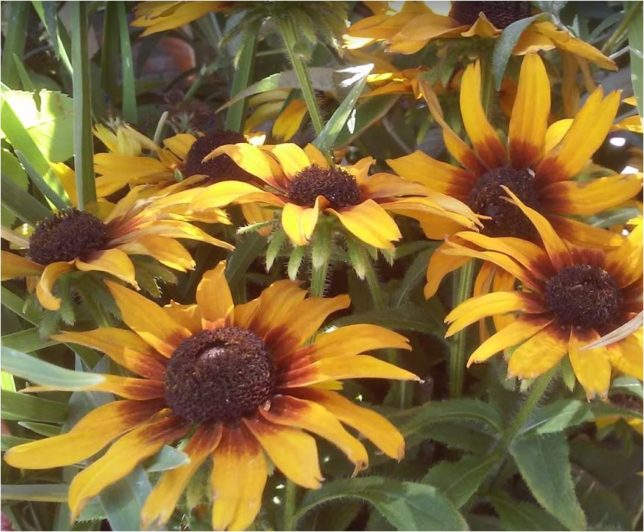
Our bountiful fruit and vegetable gardens can’t do it alone. Along with your TLC, productive gardens brimming with edibles need the timely input of pollinators to move pollen from male flowers or flower parts, to females, creating in the process that luscious cherry, spritely mandarin, or acid tomato. You know . . . the story of the birds and the bees!
Large orchards rely on hives of honeybees to get the job done. Though honeybees visit our flowers, many other often unseen bees and even striped flies that look like bees (hover flies) are responsible for much of this work. You’ve seen those huge, black fuzzy cargo planes called carpenter bees, and zippy little leaf cutter bees who furnish their homes with perfect semi-circles cut from the edges of leaves. Many native bees are even smaller and do lots of the heavy lifting of pollenizing. Fear not, they rarely sting; indeed many are incapable.
Attracting these non-robotic drones to do their work, benefits your harvest. Plant flowering plants nearby your edibles that have the same bloom time; for example, Iceland Poppies, Rosemary and Ceanothus all may be in bloom at the same time as your fruit trees; Marigolds and Zinnias may bloom along with your tomatoes, cucumbers, and peppers.
And good news, a slightly messy garden, with herbs flowering and going to seed, and even a few weeds, is a boon to beneficial insects.
July Pollinator Palette
- Lavender
Sublime fragrance and color all in a low water use package - Herbs
Especially when they go to seed; including Mint, Parsley, Cilantro, Oregano, Dill - Daisies
Add a bit of cheer! Shasta, African, Marguerites, Black-eyed Susans & Coneflowers span the color spectrum - Summer Annuals
Marigolds, Petunias, Portulaca, Zinnias - Buddleia
Butterfly Bush’s purple flower spikes are a must have for bringing in its namesake - Asclepias
Butterfly Weed is in its full glory now and supporting our fluttering friends
